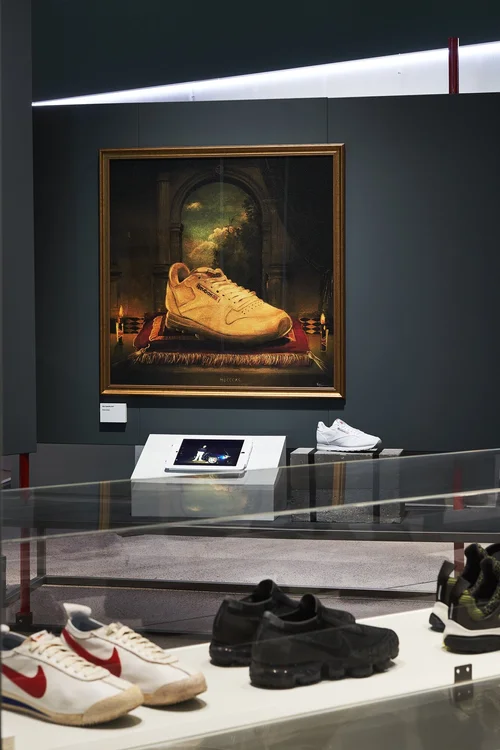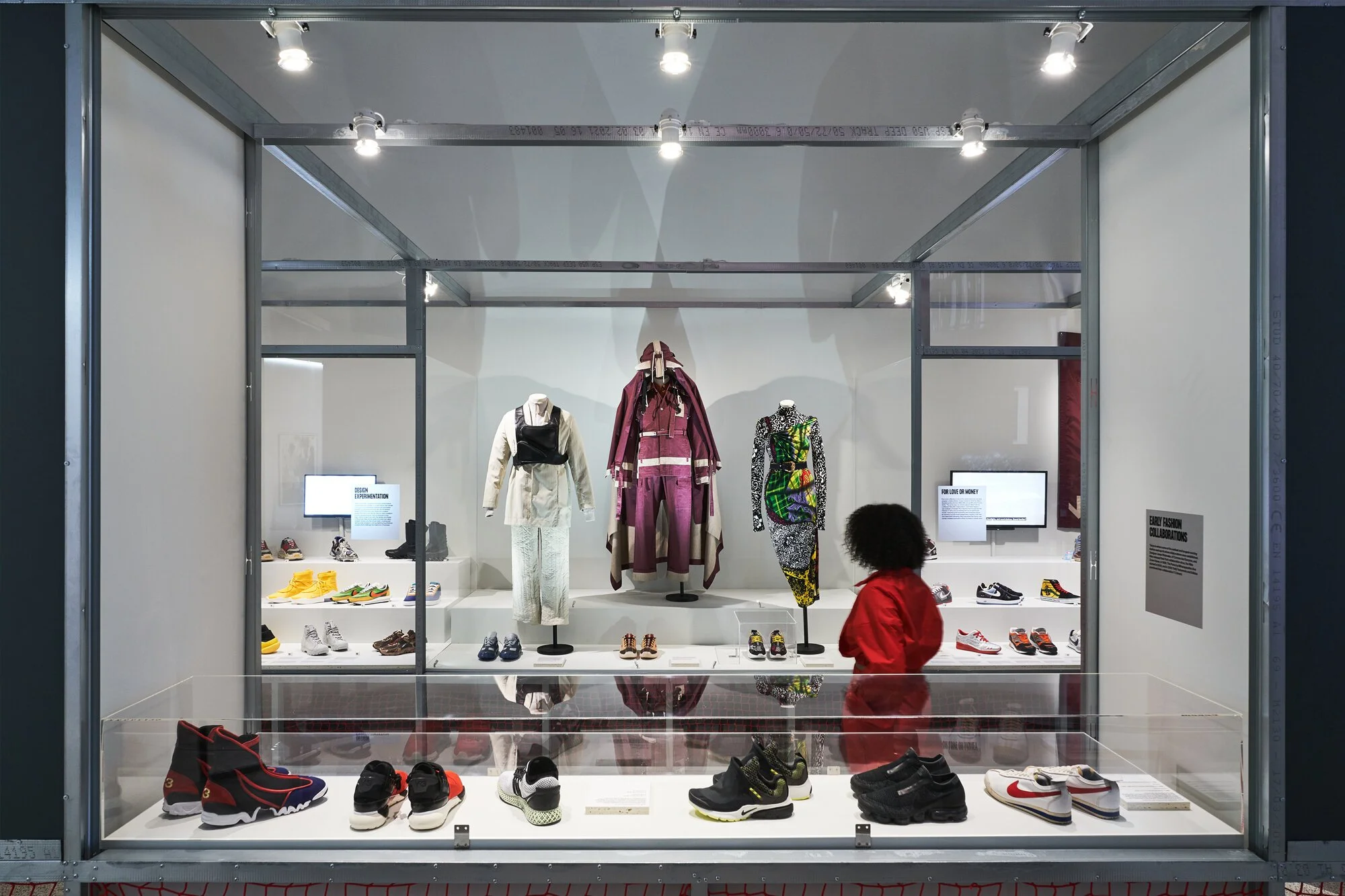Sneakers Unboxed: Studio To Street

Client
Design Museum
Services
Creative Direction
Exhibition Design
Visitor Journey
Since reopening, the Design Museum's first exhibition focuses on what it calls "one of the most universal design objects". Sneakers Unboxed: From Studio to Street takes visitors on a journey from the 1970s New York basketball scene to London's grime scene and Tokyo's streetwear world through the lens of the ever-popular sports shoe.
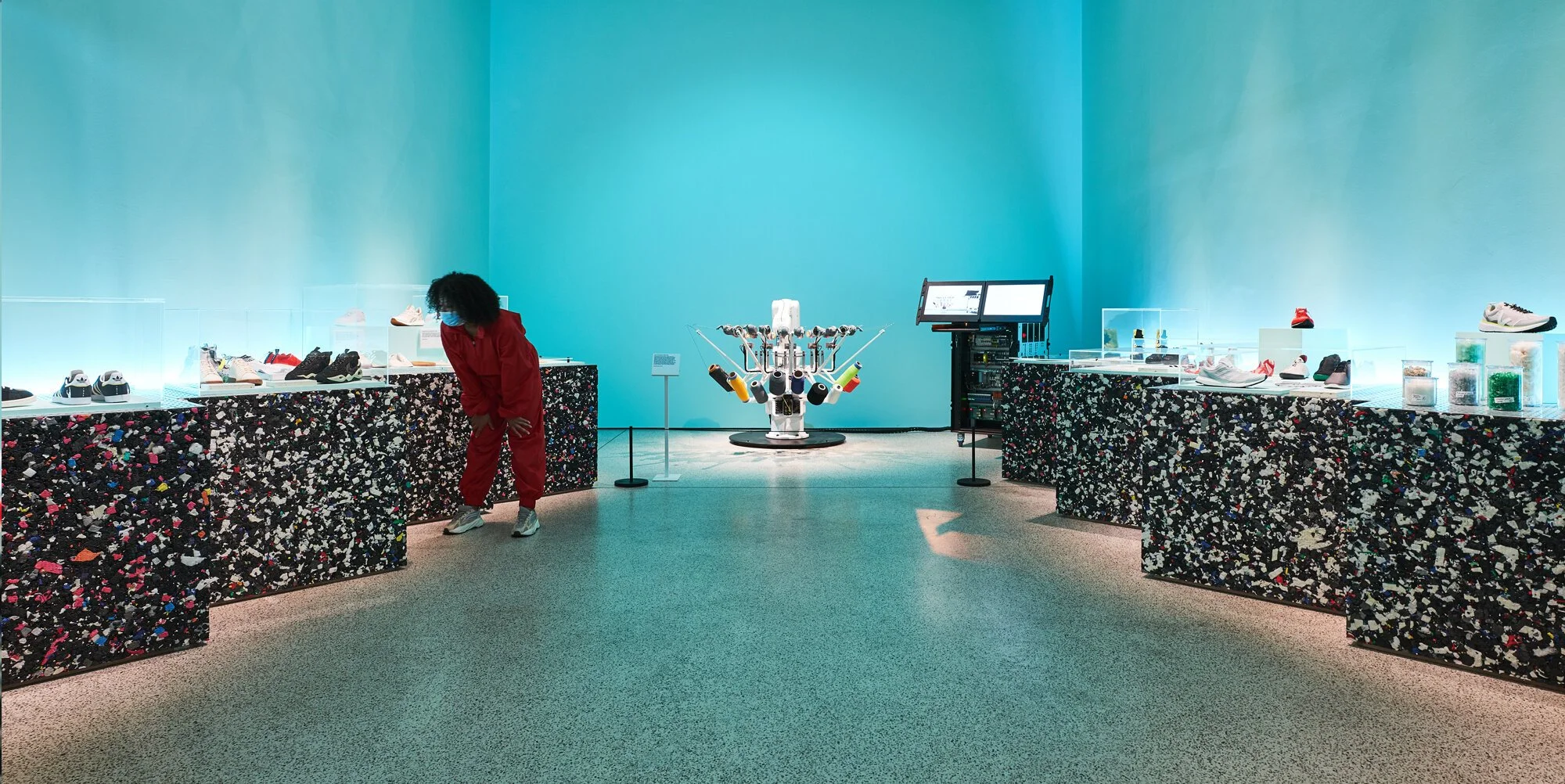
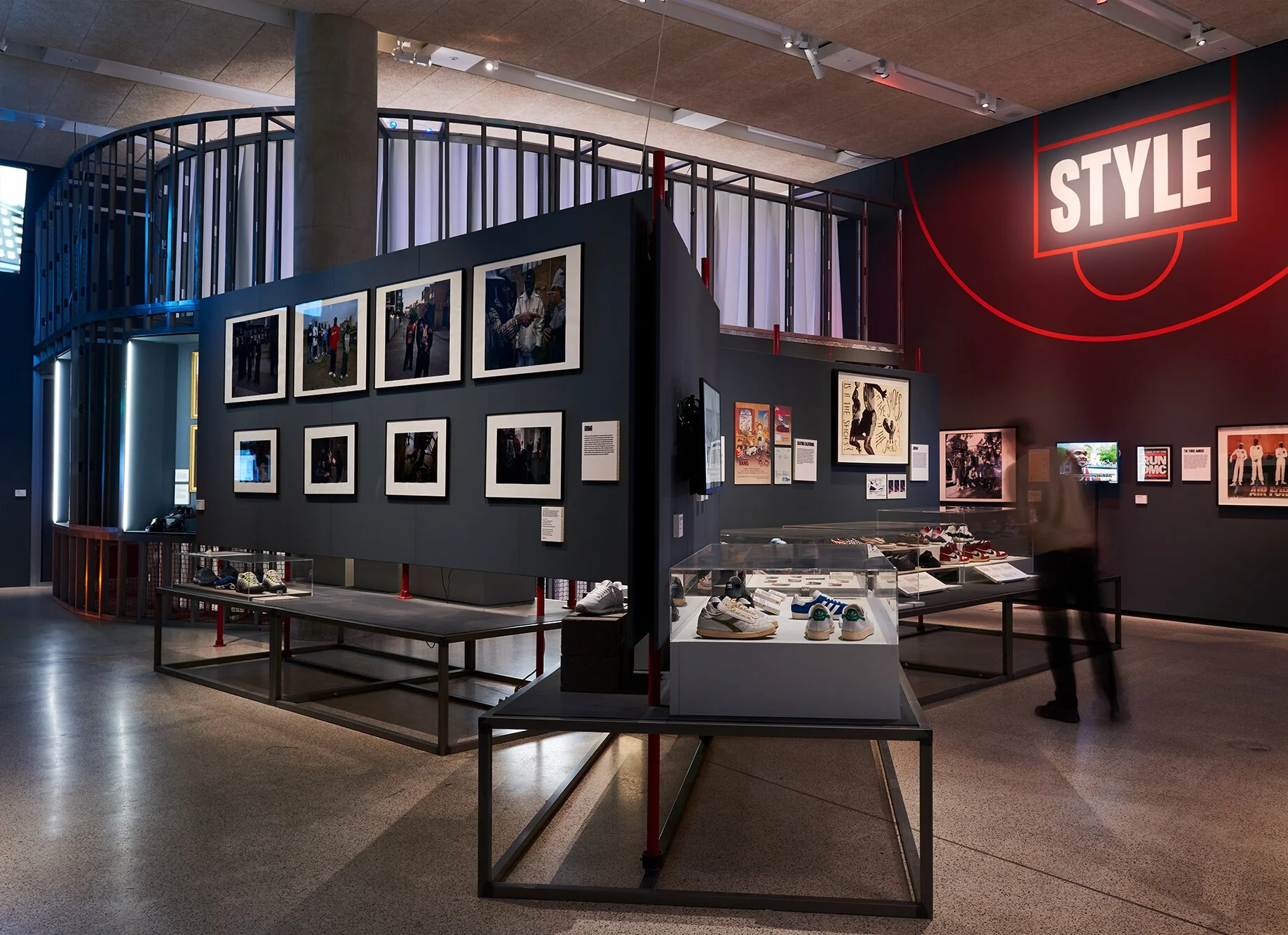
Addressing the three sections visually as independent spaces, we wanted to experiment with how presenting the shoes in different supports would reinforce their significance.
We worked closely with our long-time collaborators, Studio LP, who designed all the graphics, typography and infographics seen throughout the exhibition.
At the start of the exhibition, in the introduction section, "Sneaker as a cult object," we created a white canvas, cathedral-shaped space made of actual sneaker fabric (generously donated by PUMA) as a backdrop to a series of graphics and installations that look into sneakers as a cultural phenomenon.
Here are infographics – by Studio LP – about which countries buy the most sneakers and a chart explaining the sector's technical terms.
The following section explores how people have adopted sneakers in cities worldwide since the 1970s, from Los Angeles and New York to London. We created these walls and billboard-like displays to reference the streets and the brands that started to link sneakers to personalities from sports to the music industry. One of these links is Nike's Air Max model (known as 110s), which was immortalised on the cover of Dizzee Rascal's debut album Boy in Da Corner in 2003. The dark grey tones and cement-like surfaces also aim to evoke the idea of an urban landscape.
The last section looks at how designers have worked to improve technical performance, from Chuck Taylor's basketball clinics for Converse to Puma's self-lacing model, and we use materials linked to factories and laboratories to evoke a type of production line of the various technological developments. Designed as a partially touring exhibition, we made these sub-section islands easily transportable and reassembled.
The final room portrays the burgeoning environment movement. The centrepiece is a 3D-knitting robot from Adidas which aims to reduce waste and repair sneaker models. With green lights and minimal display cases made of an aggregate of used rubber, this area is a clean slate looking into the role of sustainability in the sneaker industry.
Read more about the exhibition here.
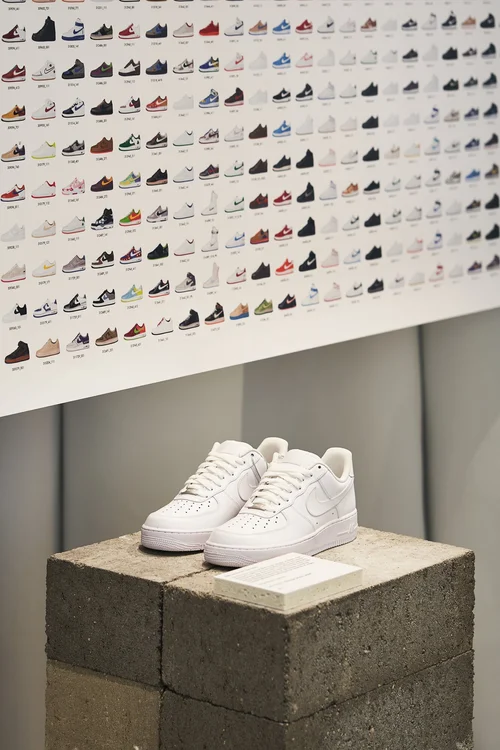
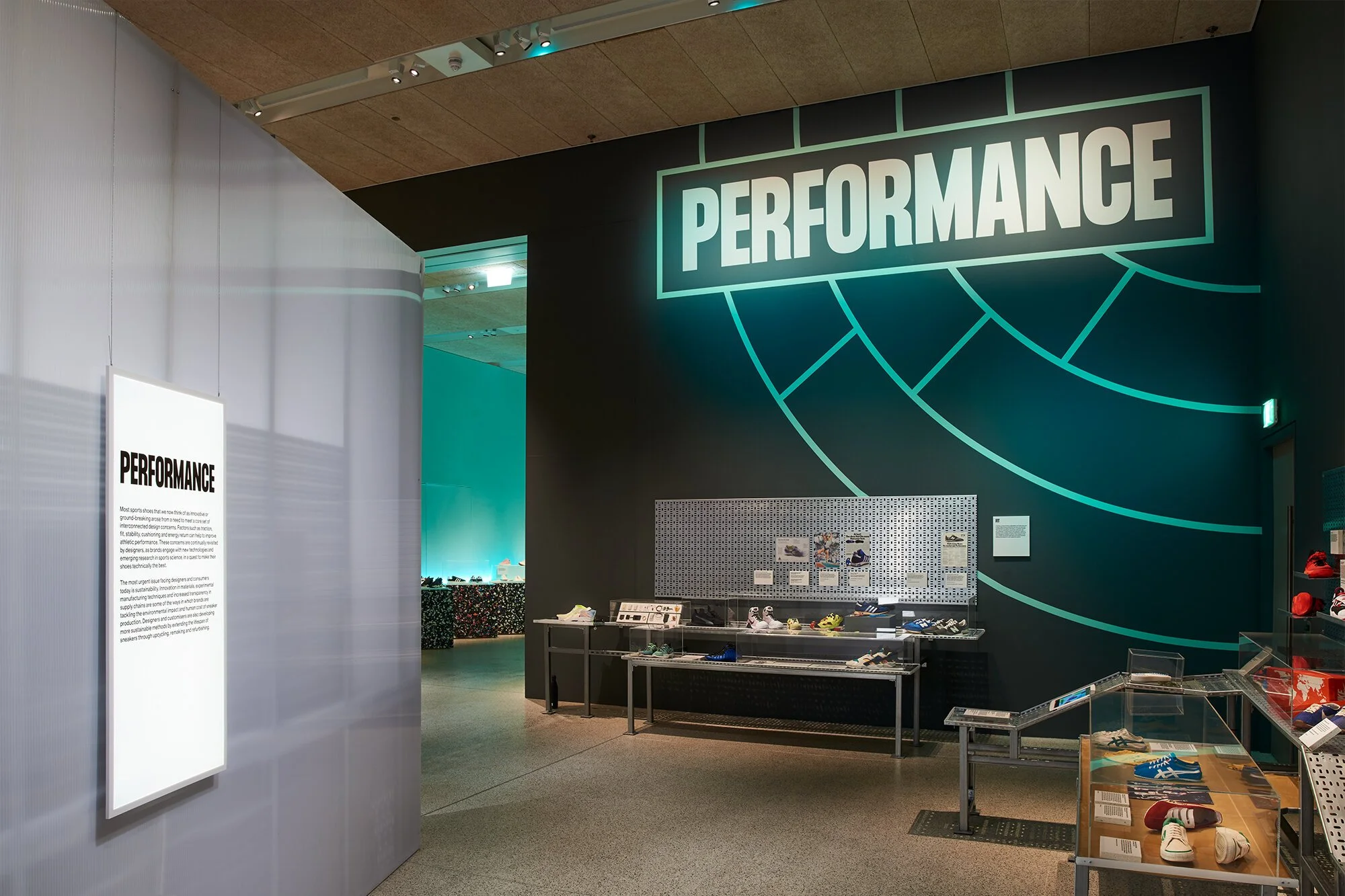
We created these walls and billboard-like displays to reference the streets and the brands that started to link sneakers to personalities from sports to the music industry.
